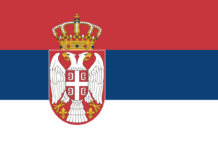Volume declines relatively more significant set against increase in population and number of households. Report by Ian Bell, Head of Tissue and Hygiene, Euromonitor International.

France has a leading and developed retail tissue market measured at per household consumption of 22kg in 2021, which compares favourably with other developed markets such as Germany. This high level of consumption means that there is little room for further organic growth and further household penetration, and the very real threat that the market will in fact recede as the country experiences a host of disruptive forces along with the rest of the region.
Inflation is the lead story
No prizes for guessing that the big story for French tissue industry in 2022 is inflation, notably category-level product price inflation in stores, supply chain inflation and economy-wide inflation which is driving consumers to make very stark choices around daily expenditure. What was once affordable, purchased as a matter of course, almost on “autopilot,” now has a wholly new context, a new purchasing landscape where consumers are now considering what is affordable or indeed a necessity in what is a rapidly changing landscape. What is happening in France is broadly indicative of what is happening across the Eurozone but there are factors that mark its direction of travel as specifically French.
Although both population and household numbers continue to increase this has not translated into commensurate volume increases as would be expected under normal circumstances. Indeed, the story for 2022 is one where volumes are expected to decline by at least 1% as households look to economise and cutback on the breadth of products they consume. A very practical example is kitchen towels, with consumers cutting back usage (“kitchen towel diet”) or more frequently deploying reusable (washable) cloths or sponges.
Certainly, the transition from pandemic to endemic has not helped retail tissue either as new working practices imbedded and had a relatively less impact on consumption in 2022 as lifestyles “normalised”. It is important to keep in mind that volume declines are relatively more significant set against the background of an expanding population as well as number of households, so from per capita and per household perspectives declines are greater.
A question of value
Value considerations are more fragmented, the retail tissue market as a whole saw value sales increase in 2022, largely as the consequence of inflation. This is category wide and comes from soaring input costs such as pulp, energy for converting, fuel for distribution and labour costs. Pulp is by far the largest contributor and is symptomatic of the European pulp supply problems linked to the war in Ukraine which has meant that the resulting sanctions on Russia have not only led to the very well publicised gas and oil price hikes but also those for wood and timber products.
France is therefore at the mercy of Europe-wide pressures, meaning that as supply is being threatened by a combination of high energy and material costs production shutdowns are coming to the tissue sector. A similar situation has been observed in other sectors from metallurgy to fertiliser production but is indicative of pricing being out of kilter with the new economic reality of production.
The big question for the French retail tissue market comes down to where input cost inflation is materialising. Leading brands such as Essity already increased prices in the first half of 2022 and are expected to do so again before the end of 2022. That said, the extent to which inflation is being tracked across retail tissue is expected to be in the region of 5% for 2022, some way behind the huge growth in producer price index for paper and pulp products. Although Essity raised prices by 7-8% in April 2002 there is an indication that retailers are so far resisting putting the full price increase onto products on shelves. To what extent this can be resisted for a second price increase will be interesting to see, but this is indicative of a category that has a history of price promotion and even loss leader status as competitive tools for retailers to compete for shoppers.
Growth decomposition
Forecast value growth predictions for the French market (and for the rest of Europe) are wholly concerned with inflation and product pricing; this is now the “only game in town” in terms of forecasting. True, France will benefit from further household and population growth over the medium term but the broader economic conditions as well as the looming threat to disposable income will mean that tissue will become very much more competitive over the medium term. Please refer to the accompanying inflation drivers in the retail tissue graphic for a broader review of which factors are affecting the retail tissue sector in 2022 and beyond*.
The situation is changing quickly, but what we can deduce from e-commerce audits is that for the year to date like-for-like median pricing for popular branded and private label SKUs is significantly up, in the order of 5-10% for brands and much more significant price increases noted for private label products. While online surveys have their limitations as only accounting for 7% of channel value in 2021, what we can say from this timely (if narrow) survey is that significant levels of price increases are appearing in stores in the second half of 2022 and into 2023. The scale of price increases linked to private label is an interesting proposition; anecdotally there is a suggestion for developed markets such as France where price tiers exist within private label, that PPI inflation has led to the lower-price segments disappearing from shelves. We will know more about this trend and how price inflation is affecting retail prices across the categories when our current round of research concludes in December 2023.
Private label
Private label can be considered moderately well developed in the French market but still 15% behind the leading levels of private label reported in the Spanish and German markets. This in one sense suggests there is still room for further development but at the same time masks the lack of discounters in the French market, which have been a driver for private label in other European markets, such is the hold that Carrefour and Auchan have on the French retail market. Discounters only accounted for 12% of tissue value sales in France in 2021 while this figure is closer to 50% in Germany. One could argue that the current situation affecting affordability could prove to be fertile ground for discounters to take a bigger share of the French retail market; if not now then it is difficult to see that discounters will ever get a better chance, given the set of circumstances.
Certainly, we can identify there is further space for private label to develop into when we compare its relative penetration in France with comparable European markets. Compared to Germany and Spain, there is a 15% gap and all the market evidence currently points to a significant expansion of private label in H1 2022 at the expense of leading brands and smaller players.
Medium-term forecast scenarios
As things stood in summer 2022 the medium-term value forecast across retail tissue in France was flat, seemingly uneventful, but this masks a great deal of underlying activity and comes with the very significant caveat that this only considers events for half of the year.
Looking at a more pessimistic scenario, one of global stagflation
Worse-than-expected global negative spill-overs from the war in Ukraine through uncertainty, lack of confidence and supply constraints cause stagnant global economic growth combined with high inflation (stagflation). Global real GDP growth is 0-2% in 2022 and ranges from -0.8% to 1.6% in 2023. Global inflation is 7.0-9.5% in 2022 and 5.5-8.5% in 2023. More abrupt and stronger cuts of Russian energy exports to advanced economies and more difficult than expected energy decoupling from Russia worsen supply constraints and lead to higher energy price increases.
An intensification of the war in Ukraine and a worsening Russian economy led to stronger Russian threats to escalate the conflict. Higher risks of an escalating conflict cause global private sector confidence to decline significantly relative to the baseline forecast and financial risk premia increase substantially relative to the baseline. Private sector confidence declines by 15-35% and financial risk by another 1-3% relative to the baseline forecast. Estimated probability (circa August 2022): 22-32% over a one-year horizon.
Global stagflation will result in value achievement being a little more subdued, but the combination of products being consumer essentials and price inflation will keep the category value buoyant even in the most testing of circumstances; whether anyone is making any money in these circumstances is a much more significant question.
Note: *Additional material









































